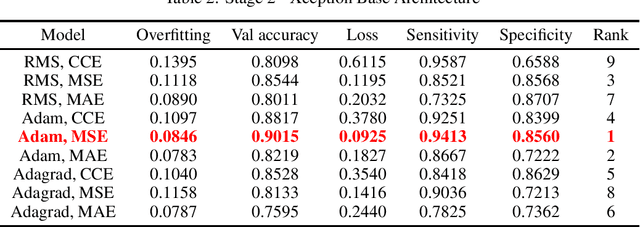Vishnu Rajan Tejus
Optimal Transfer Learning Model for Binary Classification of Funduscopic Images through Simple Heuristics
Feb 20, 2020

Abstract:Deep learning models have the capacity to fundamentally revolutionize medical imaging analysis, and they have particularly interesting applications in computer-aided diagnosis. We attempt to use deep learning neural networks to diagnose funduscopic images, visual representations of the interior of the eye. Recently, a few robust deep learning approaches have performed binary classification to infer the presence of a specific ocular disease, such as glaucoma or diabetic retinopathy. In an effort to broaden the applications of computer-aided ocular disease diagnosis, we propose a unifying model for disease classification: low-cost inference of a fundus image to determine whether it is healthy or diseased. To achieve this, we use transfer learning techniques, which retain the more overarching capabilities of a pre-trained base architecture but can adapt to another dataset. For comparisons, we then develop a custom heuristic equation and evaluation metric ranking system to determine the optimal base architecture and hyperparameters. The Xception base architecture, Adam optimizer, and mean squared error loss function perform best, achieving 90% accuracy, 94% sensitivity, and 86% specificity. For additional ease of use, we contain the model in a web interface whose file chooser can access the local filesystem, allowing for use on any internet-connected device: mobile, PC, or otherwise.
 Add to Chrome
Add to Chrome Add to Firefox
Add to Firefox Add to Edge
Add to Edge